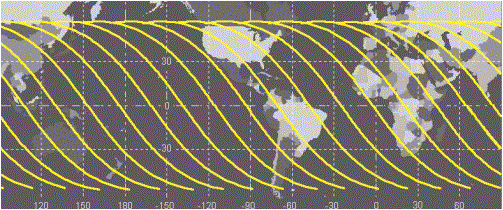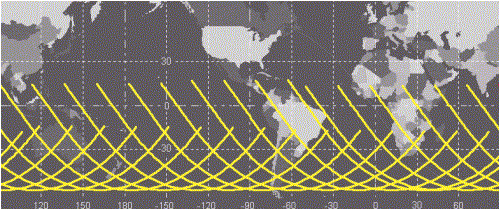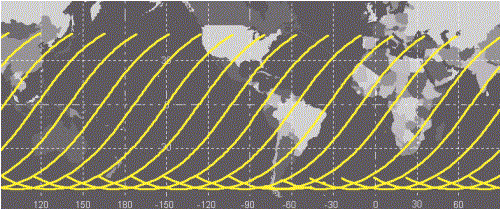Space Station Orbit Tutorial
For the purposes of planning Earth observing photography or remote sensing, there are four important points about the orbits of the ISS. Particulars of the orbits depend on the exact altitude of the station, and the exact altitude depends on the frequency that the station is reboosted to a higher orbit.
FACT 1
The station travels from west to east on an orbital inclination of 51.6 degrees. Each orbit takes 90-93 minutes, depending on the exact altitude of the ISS. During that time, part of the Earth is viewed under darkness and part under daylight. The ISS orbital altitude drops gradually over time due to the Earth's gravitational pull and atmospheric drag. Periodic reboosts adjust the ISS orbit. As the ISS orbital altitude decays, the orbit tracks on Earth change slightly.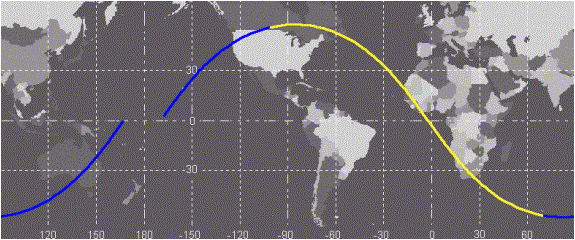
FACT 2
With each orbit taking 90-93 minutes, there are approximately 16 orbits per day (24 hours). The exact number of orbits per day is usually less than 16 (generally 15.5 to 15.9 orbits/day) depending on the altitude of the ISS. Each orbit shifts to the west by approximately 22.9° of longitude (measured as the position where the orbit crosses the equator).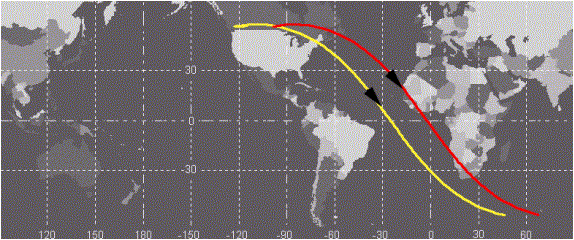
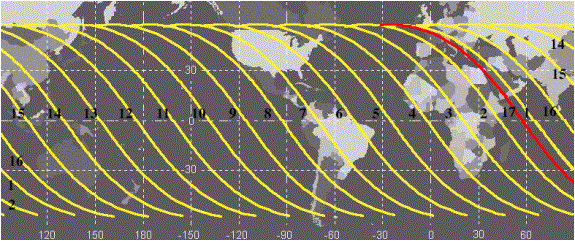
FACT 3
There is an approximate repeat of orbit tracks over the same area on the ground every 3 days. Again, the ISS altitude will determine how closely the tracks repeat.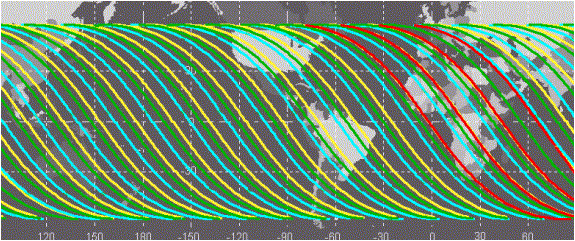
FACT 4
The part of the Earth visible to ISS astronauts in daylight changes due to the interaction between the orbit patterns of the station and the rotation of the Earth. The daylight portion of the orbits shifts slightly eastward along track each day. This lighting procession follows an approximate 63-day cycle from a descending track covering the mid-latitudes, to southern hemisphere lighting, to ascending tracks, to northern hemisphere lighting. This cycle, plus seasonal changes in solar incidence, cause the sun illumination angles to vary every time the station passes over a given region.